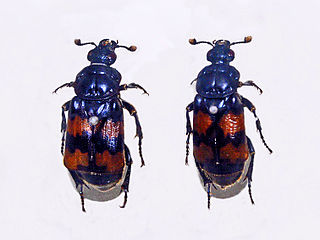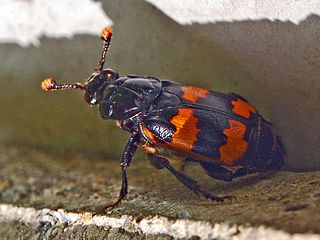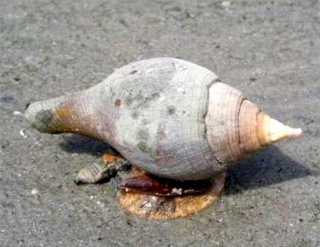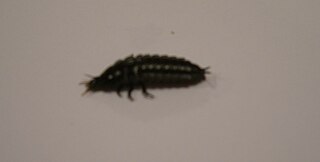
Silphidae is a family of beetles that are known commonly as large carrion beetles, carrion beetles or burying beetles. There are two subfamilies: Silphinae and Nicrophorinae. Members of Nicrophorinae are sometimes known as burying beetles or sexton beetles. The number of species is relatively small, at around two hundred. They are more diverse in the temperate region although a few tropical endemics are known. Both subfamilies feed on decaying organic matter such as dead animals. The subfamilies differ in which uses parental care and which types of carcasses they prefer. Silphidae are considered to be of importance to forensic entomologists because when they are found on a decaying body they are used to help estimate a post-mortem interval.

Burying beetles or sexton beetles, genus Nicrophorus, are the best-known members of the family Silphidae. Most of these beetles are black with red markings on the elytra (forewings). Burying beetles are true to their name—they bury the carcasses of small vertebrates such as birds and rodents as a food source for their larvae, this makes them carnivorous. They are unusual among insects in that both the male and female parents take care of the brood.

Agathidium is a genus of beetles in the family Leiodidae.

Banksia laevigata, commonly known as the tennis ball banksia, is a species of shrub that is endemic to Western Australia. It has serrated, broadly linear to narrow wedge-shaped leaves, yellow or yellowish green flowers, depending on subspecies, and linear to elliptic follicles with a slightly wrinkled surface.

René Jeannel was a French entomologist. He was director of the Muséum national d'histoire naturelle from 1945 to 1951. Jeannel's most important work was on the insect fauna of caves in the Pyrenees, France and in the Carpathians, Romania. He also worked in Africa. Jeannel specialised in Leiodidae but authored a large number of papers and works on other Coleoptera. He was a member of the Romanian Academy.

Haliotis laevigata, common name the smooth Australian abalone or greenlip abalone or whitened ear shell, is a species of sea snail, a marine gastropod mollusk in the family Haliotidae, the abalones.

Agyrtidae, or primitive carrion beetles, are a small family of beetles belonging to Staphylinoidea. They are found in mostly temperate areas of the Northern Hemisphere and in New Zealand.

Nicrophorus vestigator is a species of beetle belonging to the family Silphidae.

Nicrophorus interruptus is a species of burying beetle or sexton beetle belonging to the family Silphidae subfamily Nicrophorinae.

The American carrion beetle is a North American beetle of the family Silphidae. It lays its eggs in, and its larvae consume, raw flesh and fungi. The larvae and adults also consume fly larvae and the larvae of other carrion beetles that compete for the same food sources as their larvae. They prefer to live in marshy and woody habitats. Necrophila americana emerge from their larval state in the early summer. The P. ashtoni cuckoo bumble bee displays close mimicry with the American carrion beetle. They are important in forensic studies because of their tendency to thrive on large carcasses.

Poecilochirus is a Holarctic genus of mites in the family Parasitidae. They are relatively large and often found on rotting corpses, where they are transported by beetles. Deuteronymphs are characterized by two orange dorsal shields and in many species a transverse band on the sternal shield. The juvenile development consists of a larval stage, protonymph, and deuteronymph, but no tritonymph. Females are smaller than males. Males guard female deuteronymphs shortly before these mate, and pairs mate venter-to-venter.

Idaea laevigata, the strange wave, is a moth of the family Geometridae. It is found in Central Europe and Southern Europe. It occurs in Britain as an imported species.

Oiceoptoma noveboracense is a member of the family Silphidae, or carrion beetles, which feed on decaying organic matter such as dead animals. Its common name is the margined carrion beetle, from the orange-red margins on the pronotum, which are helpful when identifying this species. The larva is typically light brown to red and also has vertical ridges on its thorax like the adult. This diurnal beetle can be found mainly in the spring into the fall, and it has a strong preference towards a deciduous forest habitat. The primary forensic importance of this beetle is its ability to use the succession of insect fauna to provide confirmation of postmortem intervals.

Turbinella laevigata, common name the Brazilian chank, is a species of very large sea snail with a gill and an operculum, a marine gastropod mollusk in the subfamily Turbinellinae of the family Turbinellidae.

Bela nebula, also known as the nebular needle conch is a species of sea snail, a marine gastropod mollusk in the family Mangeliidae. It is the type species of the genus Bela.
Bela zonata is a species of sea snail in the family Mangeliidae.

Obesotoma laevigata is a species of sea snail, a marine gastropod mollusk in the family Mangeliidae.

Oxelytrum cayennense is a species of carrion beetles belonging to the family Silphidae.

Ablattaria is a genus of carrion beetles belonging to the family Silphidae. The beetles are predators of gastropods. All species in the genus exhibit sexual dimorphism.

Ablattaria arenaria, the snail hunter, is a beetle in the carrion beetle family Silphidae which preys on snails. It is native to the eastern Mediterranean. Adults become active in the spring, and the activity's start time is influenced by relative humidity.




















